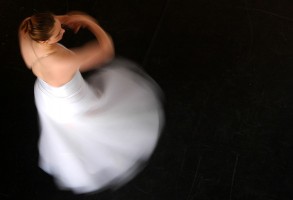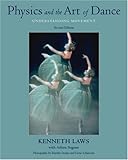Musts For Improving Pirouettes:

- Image by bichxa via Flickr
ONE:
Engage your core muscles to maintain good alignment during the turn.
TWO:
Every turn is a balance, so practice balancing the position in which you want to turn (retiré, a la seconde, etc.).
THREE:
Spot and keep your eyes off the floor (or that’s where you’ll end up).
FOUR:
Use only enough push to get around – sometimes a dance student’s biggest downfall in pirouettes is pushing so hard that they throw the turn off.
FIVE:
“Connect” your arms to your back – you should feel and imagine width across the back and shoulder blades and the arms should maintain their position (don’t “wind-up” for a turn).
SIX:
Take off from a properly placed and expansive plié for power in the turn.
SEVEN:
Strengthen your ankles supporting the relevé – if you are wobbly, sickled, or pronated, this will ruin your turn.
EIGHT:
Mentally, make a choice to come down from the turn, don’t “let” gravity make the choice for you.
NINE:
Visualize yourself doing a beautiful, clean pirouette – it really does help!
Falling Out of Your Pirouettes?
Dance Advantage to the Rescue!
 Pirouettes are not an easy movement. Anyone can whip themselves around but it takes practice, strength, and good alignment to perform a quality pirouette. The foundation of a successful pirouette is barre and center fundamentals like plié, relevé, etc. Work on getting a good, clean single pirouette first (with a strong grasp on the elements above), then progress to multiples. Don’t give up! Apply your teacher’s corrections and be patient, allowing your confidence to grow as you see improvement. Soon, you will be able to do multiple pirouettes.
Pirouettes are not an easy movement. Anyone can whip themselves around but it takes practice, strength, and good alignment to perform a quality pirouette. The foundation of a successful pirouette is barre and center fundamentals like plié, relevé, etc. Work on getting a good, clean single pirouette first (with a strong grasp on the elements above), then progress to multiples. Don’t give up! Apply your teacher’s corrections and be patient, allowing your confidence to grow as you see improvement. Soon, you will be able to do multiple pirouettes.
Food For Thought:

Years ago, during a master class with Kenneth Laws on the physics of dance I learned that, when asked how they hold their arms during a pirouette, most dancers will show you a nice, round, proper 1st position. However, after studying footage of excellent turners, he found that they all brought their arms closer to their body than is proper for a 1st position port de bras. When you think of how an ice skater spins, you will probably understand why. It was an example that illustrated that a dancer’s intuitive response to what physics requires is sometimes contradictory to what we are taught or think to be true.
You may also be interested in…
Defining and Dissecting a Piqué Turn
What are some other tips that you can offer or have been given to you?
What do you find most difficult about pirouettes?
Nichelle Suzanne is a writer specializing in dance and online content. She is also a dance instructor with over 20 years experience teaching in dance studios, community programs, and colleges. She began Dance Advantage in 2008, equipped with a passion for movement education and an intuitive sense that a blog could bring dancers together. As a Houston-based dance writer, Nichelle covers dance performance for Dance Source Houston, Arts+Culture Texas, and other publications. She is a leader in social media within the dance community and has presented on blogging for dance organizations, including Dance/USA. Nichelle provides web consulting and writing services for dancers, dance schools and studios, and those beyond the dance world. Read Nichelle’s posts.

![Reblog this post [with Zemanta]](https://img.zemanta.com/reblog_e.png?x-id=cbdb4935-686b-4a70-8410-f247d186e28b)
